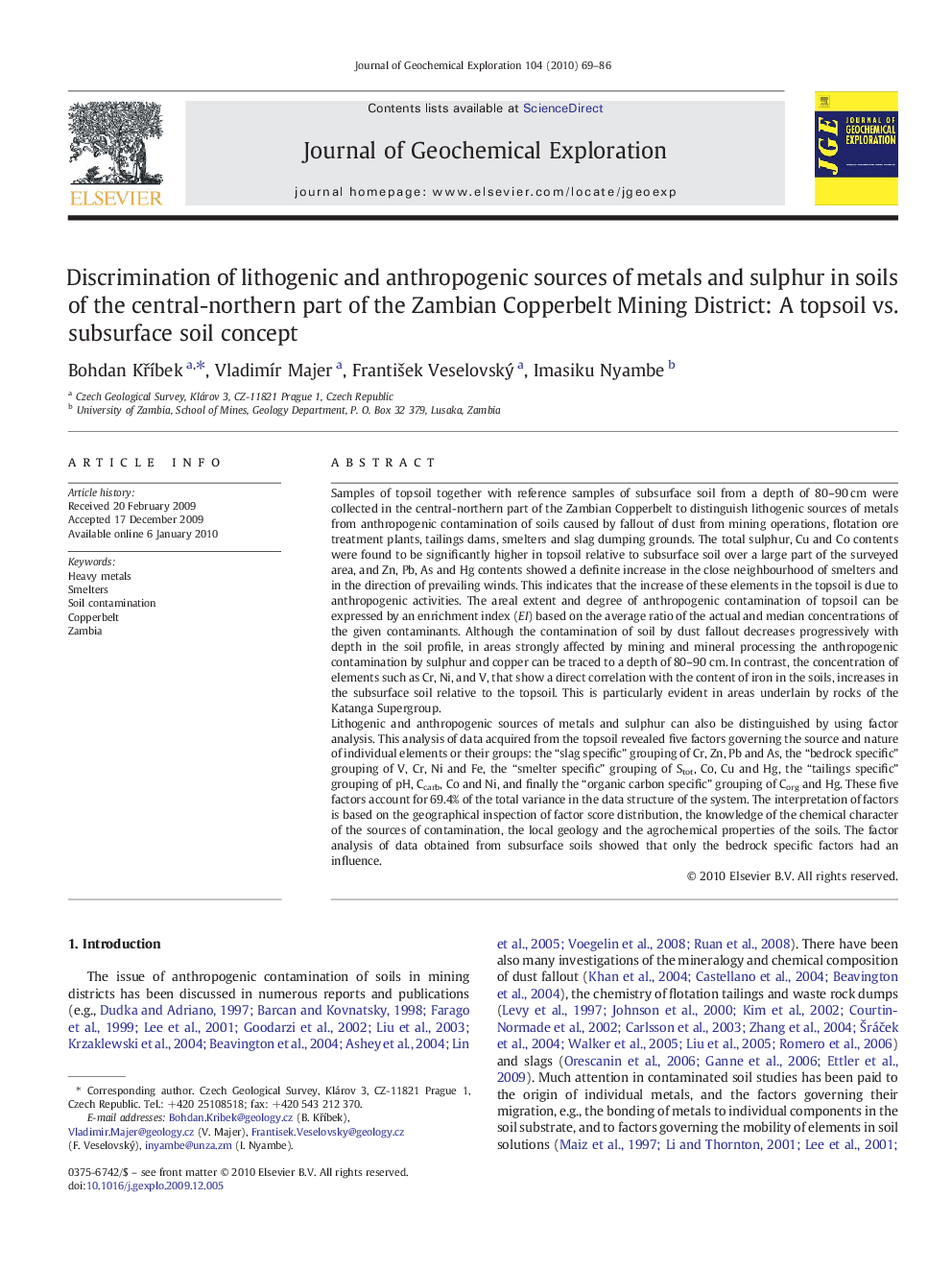| Article ID | Journal | Published Year | Pages | File Type |
|---|---|---|---|---|
| 4457984 | Journal of Geochemical Exploration | 2010 | 18 Pages |
Samples of topsoil together with reference samples of subsurface soil from a depth of 80–90 cm were collected in the central-northern part of the Zambian Copperbelt to distinguish lithogenic sources of metals from anthropogenic contamination of soils caused by fallout of dust from mining operations, flotation ore treatment plants, tailings dams, smelters and slag dumping grounds. The total sulphur, Cu and Co contents were found to be significantly higher in topsoil relative to subsurface soil over a large part of the surveyed area, and Zn, Pb, As and Hg contents showed a definite increase in the close neighbourhood of smelters and in the direction of prevailing winds. This indicates that the increase of these elements in the topsoil is due to anthropogenic activities. The areal extent and degree of anthropogenic contamination of topsoil can be expressed by an enrichment index (EI) based on the average ratio of the actual and median concentrations of the given contaminants. Although the contamination of soil by dust fallout decreases progressively with depth in the soil profile, in areas strongly affected by mining and mineral processing the anthropogenic contamination by sulphur and copper can be traced to a depth of 80–90 cm. In contrast, the concentration of elements such as Cr, Ni, and V, that show a direct correlation with the content of iron in the soils, increases in the subsurface soil relative to the topsoil. This is particularly evident in areas underlain by rocks of the Katanga Supergroup.Lithogenic and anthropogenic sources of metals and sulphur can also be distinguished by using factor analysis. This analysis of data acquired from the topsoil revealed five factors governing the source and nature of individual elements or their groups: the “slag specific” grouping of Cr, Zn, Pb and As, the “bedrock specific” grouping of V, Cr, Ni and Fe, the “smelter specific” grouping of Stot, Co, Cu and Hg, the “tailings specific” grouping of pH, Ccarb, Co and Ni, and finally the “organic carbon specific” grouping of Corg and Hg. These five factors account for 69.4% of the total variance in the data structure of the system. The interpretation of factors is based on the geographical inspection of factor score distribution, the knowledge of the chemical character of the sources of contamination, the local geology and the agrochemical properties of the soils. The factor analysis of data obtained from subsurface soils showed that only the bedrock specific factors had an influence.
